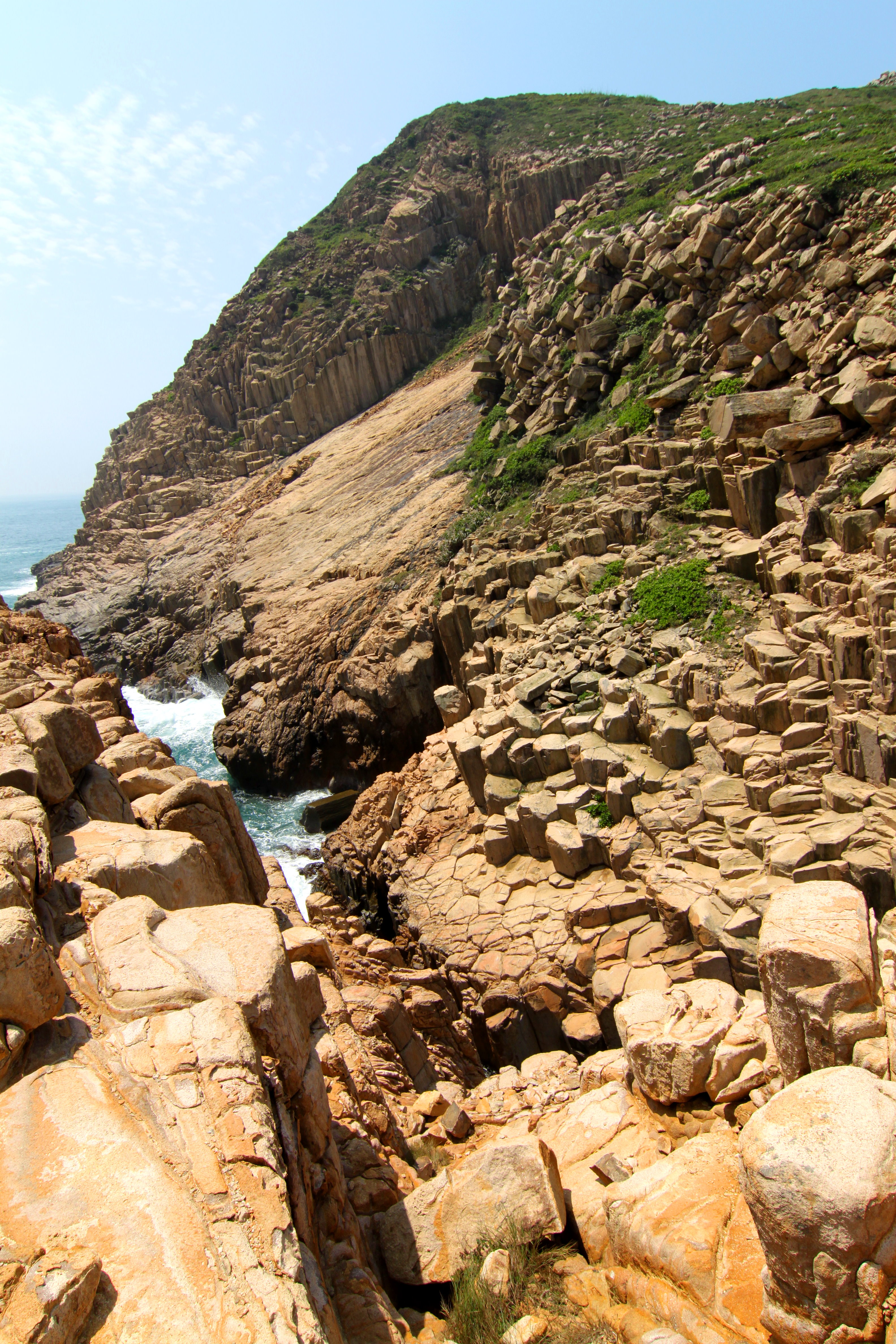Ninepin Group on:
[Wikipedia]
[Google]
[Amazon]

 The Ninepin Group () or Kwo Chau Islands () is a group of 29
The Ninepin Group () or Kwo Chau Islands () is a group of 29
Satellite view on Google Maps
Uninhabited islands of Hong Kong Sai Kung District Volcanism of Hong Kong Hong Kong UNESCO Global Geopark Underwater diving sites in Hong Kong Rhyolite groups {{SaiKung-geo-stub

island
An island or isle is a piece of land, distinct from a continent, completely surrounded by water. There are continental islands, which were formed by being split from a continent by plate tectonics, and oceanic islands, which have never been ...
s in the easternmost waters of Hong Kong
Hong Kong)., Legally Hong Kong, China in international treaties and organizations. is a special administrative region of China. With 7.5 million residents in a territory, Hong Kong is the fourth most densely populated region in the wor ...
. The Ninepin Group falls under the jurisdiction of Sai Kung District
Sai Kung District is one of the districts of Hong Kong, 18 districts of Hong Kong. The district comprises the southern half of the Sai Kung Peninsula, the Clear Water Bay Peninsula in the New Territories and a strip of land to the east of Ko ...
of Hong Kong.
Islands
The islands of the group include: * East Ninepin Island (Tung Kwo Chau; 東果洲) ** Lung Shuen Pai () or Fo Siu Pai () ** Tuen Chau Chai () ** Tuen Chau Mei () ** Shue Long Chau () or Kong Tau Pai () * North Ninepin Island (Pak Kwo Chau; 北果洲) ** Hok Tsai Pai () ** Ngan Peng Keng ** Ngan Peng Tau ** North Ninepin Island () ** Sai Chau Mei () ** Tuen Keng * South Ninepin Island (Nam Kwo Chau; 南果洲) ** Tai Chau () - where the Kwo Chau Wan ()beach
A beach is a landform alongside a body of water which consists of loose particles. The particles composing a beach are typically made from Rock (geology), rock, such as sand, gravel, shingle beach, shingle, pebbles, etc., or biological s ...
is located
** Tai Chau Mei ()
** Ta Long Pai ()
** Lai Chi Pai ()
Geography
TheNinepin Group
The Ninepin Group () or Kwo Chau Islands () is a group of 29 islands in the easternmost waters of Hong Kong. The Ninepin Group falls under the jurisdiction of Sai Kung District of Hong Kong.
Islands
The islands of the group include:
* East ...
features hexagonal vertical rhyolite
Rhyolite ( ) is the most silica-rich of volcanic rocks. It is generally glassy or fine-grained (aphanitic) in texture (geology), texture, but may be porphyritic, containing larger mineral crystals (phenocrysts) in an otherwise fine-grained matri ...
columns, the volcanic rock resulting from a volcanic eruption near Sai Kung about 140 million years ago. Ninepin Group is extremely eroded due to the heavy tides that wash against the islands every day. It features several sea caves as a result of erosion. For a long time, the Ninepin Group was devoid of human presence. However, there is a temple dedicated to Tin Hau, located on South Ninepin Island for any fishermen who landed on the island.
Conservation
The Ninepin Group Special Area () covers 53.1 hectares and was designated in 2011. It consists of the islands that make up the Ninepin Group. The geology of the area is characterised byvolcanic rock
Volcanic rocks (often shortened to volcanics in scientific contexts) are rocks formed from lava erupted from a volcano. Like all rock types, the concept of volcanic rock is artificial, and in nature volcanic rocks grade into hypabyssal and me ...
s of the Cretaceous
The Cretaceous ( ) is a geological period that lasted from about 143.1 to 66 mya (unit), million years ago (Mya). It is the third and final period of the Mesozoic Era (geology), Era, as well as the longest. At around 77.1 million years, it is the ...
period.
Transportation
Because no one lives on Ninepin Group, there is no public transportation to the islands. One must rent a boat in order to reach the Ninepin Group.See also
*Hong Kong UNESCO Global Geopark
Hong Kong UNESCO Global Geopark (), formerly Hong Kong National Geopark (), was inaugurated on 3 November 2009. It is a single entity of land area over 150 km2 across parts of the eastern and northeastern New Territories. On 18 September 2 ...
References
External links
Satellite view on Google Maps
Uninhabited islands of Hong Kong Sai Kung District Volcanism of Hong Kong Hong Kong UNESCO Global Geopark Underwater diving sites in Hong Kong Rhyolite groups {{SaiKung-geo-stub